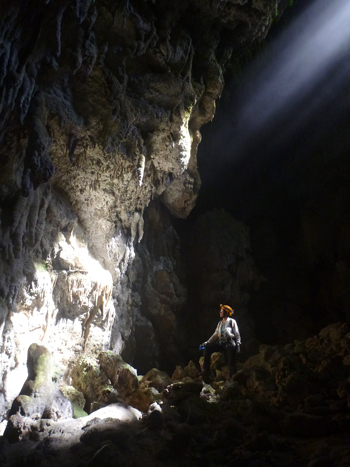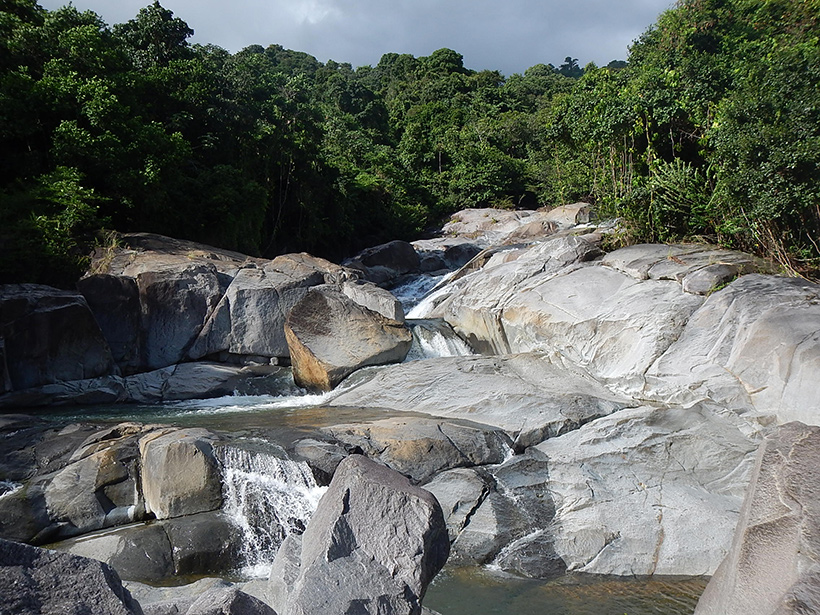Source: Journal of Geophysical Research: Earth Surface
High up on the northeastern edge of Puerto Rico are the Luquillo Mountains, which rise up over 1000 meters. Because the island is sandwiched between the North American and Caribbean tectonic plates, it periodically experiences tectonic uplift.
Some rivers in the Luquillo Mountains run on top of an igneous rock called quartz diorite, on which they developed prominent knickpoints—places where the slope of the river increases significantly, converting quiet, meandering streams into tumbling torrents and mighty waterfalls. These knickpoints represent the front of aggressive waves of erosion that sweep through the landscape. They sharply influence soil mineralogy, nutrient pools, forest composition, and carbon storage.

A new study by Brocard et al. investigates how these knickpoints made their way upstream through the tropical montane forest. The authors first measured the concentrations of two isotopes—beryllium-10 and aluminum-26—in quartz sediments deposited in caves close to sea level before the mountains were uplifted. The isotopes can only form when the rock surface is exposed to air, so the pair, in effect, dates the time of sediment burial.
From this age—about 4 million years ago—they tracked back to determine when uplift initiated and when the river knickpoints formed. The authors then calculated that the knickpoints have moved very slowly farther upstream since then.
They also measured the amount of beryllium-10 in the forest soils. The concentrations of beryllium-10 indicate the rate of erosion in areas close to the riverbed. They show that the knickpoints are still actively retreating today, at a speed rate that matches the speed at which they have been traveling since the island was uplifted.
Finally, the team investigated the factors that affected knickpoint retreat. They determined that the tropical, old upland landscape hinders the streams ability to cut through rock. The hot, humid climate creates thick soils with small grains at the surface via chemical breakdown of rock into sand-sized particles. Sand is not as efficient of a “tool” for abrading the riverbed. In addition, the gentle slopes in the uplands slow retreat; however, jointing or cracking of the rock can speed up retreat, which is dominated mainly by weathering along the rock fractures. (Journal of Geophysical Research: Earth Surface, 2016, doi:10.1002/2015JF003678)
—Wudan Yan, Freelance Writer
Citation:
Yan, W. (2016), How do tropical forests slow knickpoints in rivers?, Eos, 97, https://doi.org/10.1029/2016EO054953. Published on 01 July 2016.
Text © 2016. The authors. CC BY-NC-ND 3.0
Except where otherwise noted, images are subject to copyright. Any reuse without express permission from the copyright owner is prohibited.

